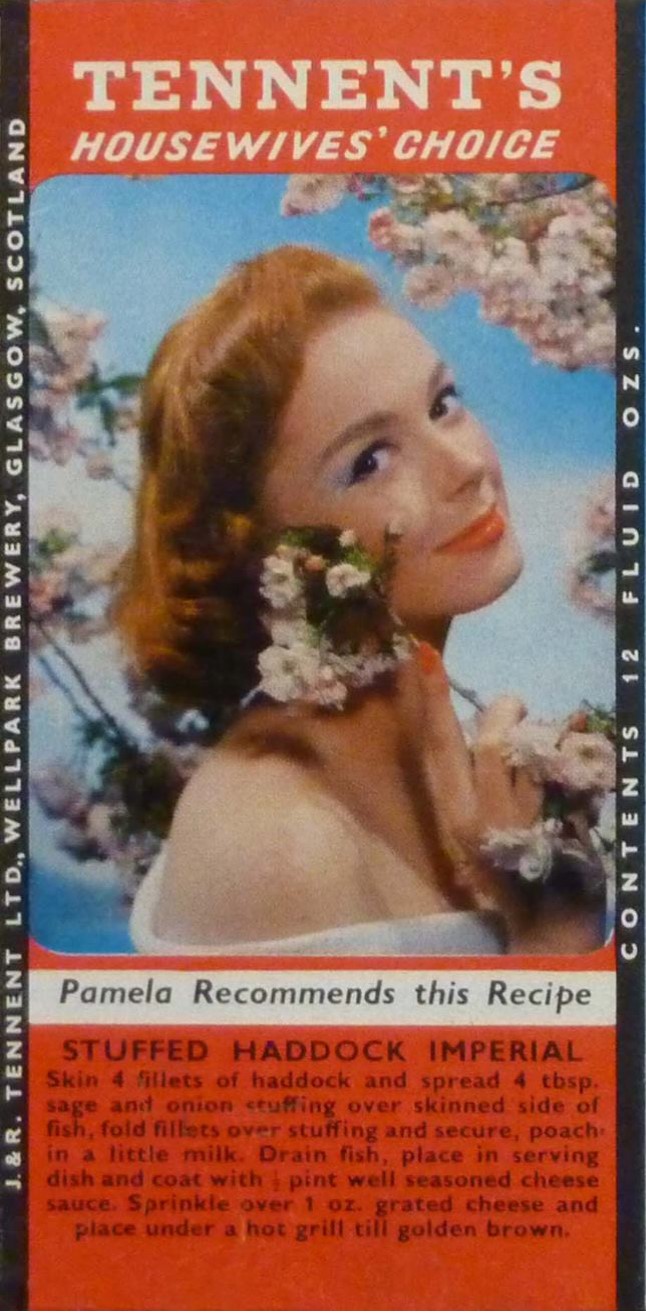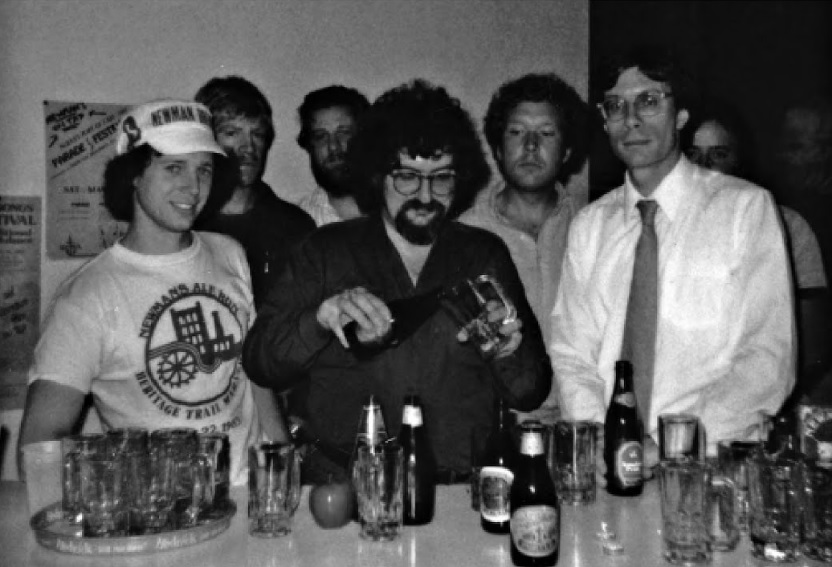A week tomorrow is March. I haven’t even bought my seeds for the garden! How edgy is that? What if I have to pick another sort of broad bean, something new to the market? March also means mud, college basketball and baseball spring training. I suppose it might also mean Bière de Mars if I could find any. I am sure will survive without it. Quite sure, especially compared to ending up with the wrong strain of broad beans. How the neighbours will laugh.
To begin this week’s new review, you know a hobby is well into its mature and not necessarily necessary stage of the life cycle when the news starts to sound like a Monty Python skit:
One of the oldest Lithuanian farmhouse ale yeast strains – sourced from famed brewer Aldona Udriene’s JOVARU Beer – is now available… “We’re ecstatic and fortunate that Aldona Udriene of Jovaru, known as the queen of Lithuanian farmhouse beer, is partnering with us…”
Sadly, no mention of our hero Lars whose work would have been unintentionally instrumental to the craft brewing world’s opportunity to mistreat this tradition. (Not to mention the website Craft Brewing Business which ran the story seems clearly to have poached their story’s photo from Lars.)
In other yeast news, sadly it turns out that the discovery of yeast from a bottle of beer found in a shipwreck was not quite a discovery:
It turns out, there’s more to the story. It turns out, there’s already beer made with that yeast. At Saint James Brewery in Holbrook, Long Island, owner-brewer Jamie Adams has for the past year or so been making use of yeast taken from bottles found in the wreck of the SS Oregon, which sank off Fire Island in 1886. Those beers have mixed the historic yeast with modern yeast.
Hmm… why blend yeasts like that? I’d still be interested in efforts at “a biotech lab at nearby SUNY Cobleskill to culture the yeast for modern use.” But that’s because I was marginally famous in that fabulous program for a glorious afternoon with Craig. Craig was more marginally famous than me. Obvs.
Next up, the chef-owners of Montreal’s celebrated restaurant Joe Beef, David McMillan and Fred Morin, published an exposé on their own past alcohol dependency in Bon Appétit magazine:
The community of people I surrounded myself with ate and drank like Vikings. It worked well in my twenties. It worked well in my thirties. It started to unravel when I was 40. I couldn’t shut it off. All of a sudden, there was no bottle of wine good enough for me. I’m drinking, like, literally the finest wines of the world. Foie gras is not exciting. Truffles are meh. I don’t want lobster; I had it yesterday. What am I looking for, eating and drinking like this every day?
Hmm… what would it take for craft beer to form a registered charity to have professional therapists assess brewery workers and then be able to send them either to therapy or to a rehabilitation center?
Help. I saw this tweet and was unclear of the implication other than to note that by way of some photoshopping a message on a t-shirt was removed from a image used by BrewDog. I am at a loss. Please help.
Conversely, some very blunt and largely (in my view) correct observations on the treatment of various problems in good beer these days and specifically responses to racism:
This level of outrage isn’t applied when the issue is racism or the person offended is black. The idea that we should all sit around singing “Kumbaya” because someone hired a black face and instituted “sensitivity” training WITHOUT an apology or restitution is a dub. People are looking for any reason to go back to publicly drinking their Founders products.
Wonderful line, full of importance: “If this was a difficult or emotional read, just imagine what it must have been like to write this piece, let alone live portions of its content.” Also consider this and this as well as this backgrounder from the author.
The entirely welcome death of “curate” as it relates to beer.
The English pub: clubhouses of cliques or open inviting spaces for all? Very good question with perhaps an honest answer which is “both”!
Next, Jay Brooks wrote his piece for #FlagshipFebruary and it was entirely enchanting – and it had nothing to do with the beer he selected to write about – because it was really a short biography of his life with good beer:
I’m part of that dying breed of beer lovers whose first encounter with better beer predates the craft beer movement. I grew up in Eastern Pennsylvania, when it was a land of regional lagers and the occasional cream ale, but it took joining the military and being posted to New York City to open my eyes to beer’s diversity and endless possibilities. In those dark days — roughly 1978-1980 — it was the imported wonders of Bass Ale, Guinness, Pilsner Urquell, and many others that captivated both my imagination and my taste buds.
And, as a bonus, Jay adds this tidbit: “…[d]espite its success over the previous decade, it had still not remotely saturated the bar scene in the San Jose area…” The beer? Sierra Nevada Pale Ale. The modesty of the early success of SNPA contrasts with it’s later national fortunes. Very interesting. Better than the exercise in seemingly denying undeniable* truths.**
Now smaller.
Finally, the Nova Scotia Court of Appeal issued an appellate ruling on a case brought by a craft brewery over the fees paid to the government to sell their beer:
Unfiltered applied to the Supreme Court for a declaration that the mark-up was an unlawful tax under s. 53 of the Constitution Act. The application judge found that the mark-up was a proprietary charge and, therefore, not an unlawful tax.
The key word? “Proprietary”! What the ruling really says is that brewers make the beer under license, then it is deemed to be owned by the government for sale by the brewer as agent for the government. It’s called a liquor control board for a reason. And notice this at paragraph 58:
Unfiltered argues that it receives nothing for the mark-up which it pays to
the NSLC. With respect, I disagree. Unfiltered has the ability to sell beer in this province. Without the licenses and permits issued by the NSLC and compliance with them it could not do so.
Boom!! Consider the license to replicate someone else’s created music via CD or Spotify, you are using someone else’s property. In this case, its the same except we are dealing with the proprietary right to convert fermentables to alcohol. Fabulous. As you all know, I wrote a chapter in 2007’s Beer and Philosophy: The Unexamined Beer Isn’t Worth Drinking entitled “Beer and Autonomy” in which I explored in summary how government intersected with alcohol. I wish I had this ruling to work with when I put that chapter together as it gets to the nub of the matter clearly and, obviously, with authority.
Enough! Check out Boak and Bailey on Saturday and Stan on Monday if you want more sensible insights on the world of beer. Soon… March!***
*physically.
**perhaps mentally.
***#MoneyMakerMarch!





